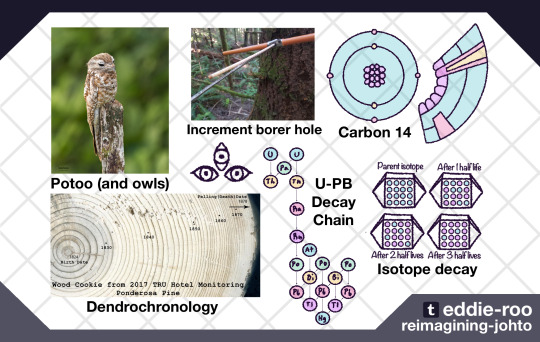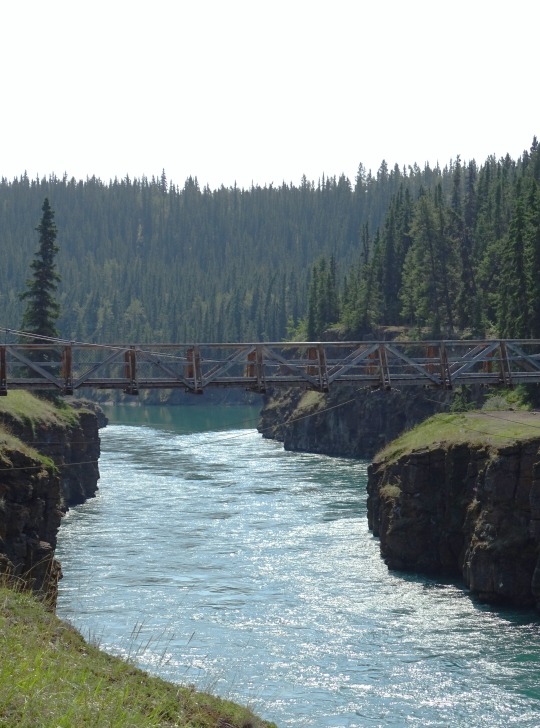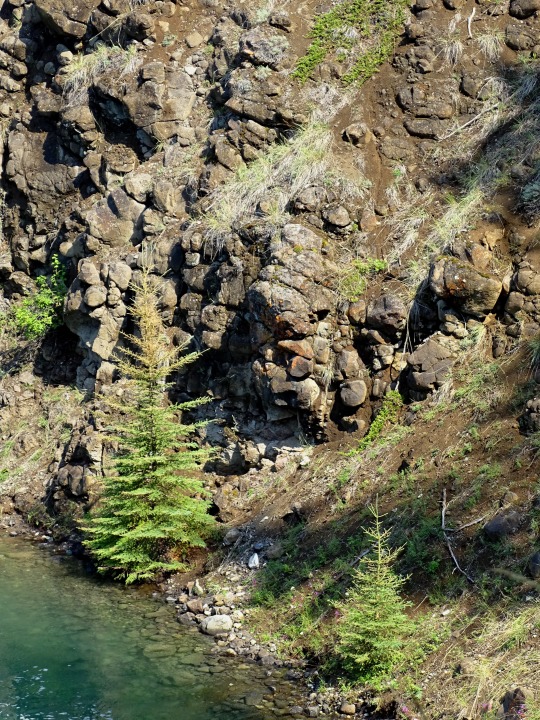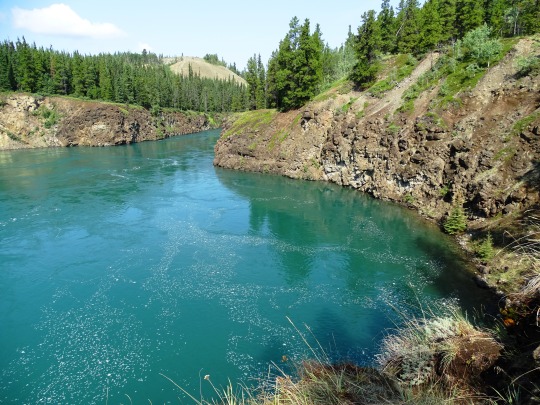#geochronology
Text
Wordplay Wednesday: TITHONIAN
Here is a word used by paleontologists and geologists quite frequently along with many other related words. The Tithonian was the final age of the Late Jurassic Epoch of the Jurassic Period of the Mesozoic Era or the Phanerozoic Eon spanning from 19.2 +/- 0.7 Ma to 145 Ma.

Rocks associated with this age include upper Brushy Basin Member of the Morrison Formation in North America,

Solnhofen Limestone in Germany,

Lourinha Formation in Portugal, the Tendaguru Formation in Africa,


the Shangshaximiao Formation in China, and the Chacarilla Formation in South America just to name a few.


10 notes
·
View notes
Text

Visual Inspiration

Stemian Natu
The stump Pokemon
STEM topic: Dendrochronology
The Natu of Stema have been found to make psych connections to trees dead and alive.
It is said that if you look through a Natu’s perforation while it sleeps on a stump you’ll be able to get a glimpse of the past.
Stemian Xatu
The orbital Pokémon
STEM topic: Carbon 14 dating
Unlike the Xatu of Johto, Stemian Xatu can look far into the past instead of predicting the future, some speculate they actually experience time in reverse.
When the sun shines through Xatu’s perforation a projection of a past event will play for a brief moment, this has made them an invaluable companion for Stemian historians.
Uatu
The crystalline Pokémon
STEM topic: U-Pb dating, isotope decay
Almost like a living computer, Uatu have one of the most complex brains amongst Pokémon, being able to effortlessly make lengthy calculations in the blink of an eye or three.
Uatu are reclusive beings, almost never interacting with other creatures be it Pokémon or human making them quite difficult to train. It is said that when a Uatu has found a trustworthy partner, it’ll share some of its vast knowledge with them as a sign of respect.
Layout inspired (cough cough, copied, cough cough) from @n0rtist, because it is his challenge and I wanted it to look on brand.
22 notes
·
View notes
Text
listen there was no season 2 slut “era,” will graham came in like a whore at the start and went out like a whore in the finale. in geochronology that’s an eon not an era


nbc hannibal 1x01 “apéritif” to 3x13 “the wrath of the lamb”
#nbc hannibal#will graham#hannibal lecter#hannigram#murder husbands#hannibal aperitif#hannibal the wrath of the lamb#gif by rocktheholygrail
1K notes
·
View notes
Text










Miles Canyon, YT (No. 4)
The lava flows and cinder cones in the Alligator Lake volcanic complex southwest of Whitehorse are the greatest accumulation of these rocks.
The Miles Canyon Basalts were thought to be Pleistocene age. However, geological investigations supported by geochronological analyses indicate that these rocks are much older. The 'type' Miles Canyon flows along the Yukon River are ~8.4 million years old (Miocene) and the Alligator Lake flows are ~3.2 million years old (Pliocene). The Alligator Lake cones may be younger but have been affected by glaciation so are not entirely post-glacial in age.
Source: Wikipedia
#Miles Canyon#Miles Canyon Basalt#geology#volcanic rocks#travel#original photography#vacation#tourist attraction#landmark#landscape#Canada#Yukon#Whitehorse#the North#subalpine fir#river bank#summer 2023#forest#woods#flora#nature#countryside#cityscape#Yukon River#Miles Canyon Suspension Bridge#architecture#engineering
22 notes
·
View notes
Text
In the world of ancient pyramids, it seems like there’s always a race to the past. Are the oldest ones in Egypt? Peru? It’s been up for debate since about 2001. But now, there’s a new contender in the historic who’s-who of pyramids: Indonesia.
A team of archaeologists, geologists, and geophysicists recently published a paper in Archaeological Prospection suggesting that Gunung Padang in the Cianjur District of the West Java Province is not actually the naturally occurring hill that everyone thought it was. Instead, they say it’s actually an ancient man-made structure. Previously, Gunung Padang referred only to the megalithic stone complex that sat on top of the hill, which some archaeologists believe was used as a celestial calendar (though the actual use is still unknown). But the team’s research shows that the entire structure—complex and hill itself—was sculpted by humans beginning about 25,000 years ago.
Danny Hilman Natawidjaja, Ph.D, an earthquake geologist and one of the co-authors of the paper, says he “stumbled upon a small hill with a peculiar shape and a surprisingly well-preserved surface” in 2011, while examining the area’s topography.
“This hill stood in stark contrast to the rugged, highly eroded mountainous terrains typical of the Tertiary volcanic regions in its vicinity,” he says.
That discovery sparked several years of research by Hilman Natawidjaja, who gathered multidisciplinary researchers to use ground-penetrating radar and 2D electrical resistivity tomography to explore the site. By 2014, the team knew they had a massive discovery on their hands.
From the inside out, Gunung Padang is constructed in four parts. The first and oldest is in the middle, a natural lava hill from a dead volcano, sculpted by humans into a pyramidal shape. The next portion is made of coarse sands and pillar-like structures, followed by another layer of columnar rocks, and finally the megalithic stones on the surface layer, all meticulously placed and layered by hand.
The published paper was the first full discussion of their findings, and it included details surrounding the exact procedure they used to date the sections of the pyramid they discovered.
“We must not overlook the equally compelling and profound journey to understanding our own history.”
“We are optimistic that our findings will inspire further geo-archaeological studies, as we know many other large, ancient structural treasures in Indonesia and worldwide that remain unexplored and undated by geochronological methods,” Hilman Natawidjaja says. “Surprisingly, even Indonesia's most renowned ancient sites, including the iconic Borobudur temple, lack precise dating.”
He hopes as well that the new methods of exploration—the radar and tomography, as well as a multidisciplinary approach with multiple scientists—could be helpful in accurately dating other ancient structures, like the moai on Easter Island and the Nan Madol complex in Micronesia.
“Despite the human quest to unravel the mysteries of the universe and search for extraterrestrial life, we must not overlook the equally compelling and profound journey to understanding our own history,” Hilman Natawidjaja says. “Much remains unknown and unexplored, waiting for us to uncover its secrets.”
That all being said, the paper is still causing some controversy in the scientific community, some of whom are calling for more research than what’s already been done in order to fully verify the claims.
“The dates are somewhat controversial but seem to be solid,” says Dan Joyce, Director Emeritus and Archaeologist at the Kenosha Museum Campus in Wisconsin. “To better understand… the age of the site, independent investigations concentrating on radiocarbon dates and repetition of results is needed. Extraordinary claims demand extraordinary, replicable evidence.”
For his part, Hilman Natawidjaja welcomes the controversy.
“We fully anticipate our study's results will be met with scepticisms and questions from scientists and scholars worldwide,” he says. “Nevertheless, we welcome the opportunity to engage in discussions and further studies… Our quest for knowledge should lead to enlightenment and unity, not division.”
33 notes
·
View notes
Note
hi, I'm a student looking to maybe go into paleontology! I love your blog, and I've just got a few questions if that's alright!
How did you get into paleontology?
How did you end up becoming a paleontologist (as in, what subjects and such helped)
and what do you do on the job?
Sorry for all the questions, I'd just like to know more about being a paleontologist!
Hi! So
There are a LOT of ways to get into paleontology
The field has multiple parts:
Geologists who focus on the rock content and depositional environment and the context each fossil is found in
Biologists who focus on what the fossils were like when they were alive
Artists who do their best damn job to take all of the evidence and reconstruct the organisms as they were in life
Paleoartists are just as much part of paleontology as the rest of us! In fact, paleoart is an important part of the science.
I personally got into paleontology via option B, Biology. I majored in biology in college and then got a master's degree in evolutionary biology. I also kept up with paleontological papers, read a lot, and constantly challenged my own assumptions.
In undergrad, I did research on paleo, too - that's a big help. I got to organize a Burgess Shale collection and identify all the organisms. Getting a research position in undergrad is a major help to getting your foot in the door.
The way I got into my paleontology PhD program was via networking, unfortunately. There are a lot of conferences year round about paleontology, and lots of people - enthusiasts, wanna be scientists, but also fully fledged scientists and researchers - attend them. I met my advisor, Dr. Peter Houde, at one such conference (Society of Vertebrate Paleontology Annual Meeting). We chatted, he realized I had a lot of research interests in common with him, and I applied to work with him.
Evolutionary Biology, Anatomy, Physiology, and Ecology are the big biology subjects that every paleontologist needs to know. We need to know how things evolve, how their bodies work, and how they interacted with each other and their abiotic environment.
In terms of geology, the big things there would be Sedimentology, Stratigraphy, Geochronology, and Geochemistry. Understanding how sedimentary rocks form, how things fossilize within them, how we measure deep time, and what the different chemicals in fossils and rocks mean for that organism's history are all necessary components.
I would also take drawing classes, specifically so you can draw what you observe in the field. I never did and I regret it.
In terms of how I fell in love with paleo originally, well, my parents showed me Land Before Time when I was like, one, and I fell in love instantaneously. I spent most of my childhood reading dinosaur books, through high school. I just kind of never stopped being obsessed.
On the job, I mostly look at fossils at a lab bench, prep them with very basic chemicals (so nothing too dangerous most of the time), and look at their traits. I also scour databases and gather lots of information about what I need to know. There's some programming, some excel work, graphing, lots of basic stuff. I also have to write a loooot. I don't do fieldwork, because I'm disabled and fieldwork is hella unaccessable, but there's lots for me to do at the bench!
I can go into it more, but I think that's a good start.
48 notes
·
View notes
Text
Mineral Swag Round 1 Funky Little Guys


Neither of these pictures capture the coolest parts of either mineral so READ MORE UNDER THE CUT!
Bismuth is an element but it also forms ores that look pretty fucking sick. The cool iridescent colors of bismuth are caused by oxidation, but it initially forms as a grey metallic mineral. It also can form stairstep crystals which basically look like 3D rainbow concentric squares, aka sick as fuck.

Zircon may not outwardly look as cool as bismuth, but trust me when I say it is a very fun and important mineral. It is often used for geochronology (figuring out the age of rocks), and has a pretty distinctive dark halo around zinc crystals when seen in thin section.
These pleochroic halos are basically areas of discoloration in minerals like biotite caused by minerals like zinc going through radioactive decay. Here’s a picture!


Both of these pictures are from here
28 notes
·
View notes
Text
A large-scale transcontinental river system crossed West Antarctica during the Eocene

Abstract:
"Extensive ice coverage largely prevents investigations of Antarctica’s unglaciated past. Knowledge about environmental and tectonic development before large-scale glaciation, however, is important for understanding the transition into the modern icehouse world. We report geochronological and sedimentological data from a drill core from the Amundsen Sea shelf, providing insights into tectonic and topographic conditions during the Eocene (~44 to 34 million years ago), shortly before major ice sheet buildup. Our findings reveal the Eocene as a transition period from >40 million years of relative tectonic quiescence toward reactivation of the West Antarctic Rift System, coinciding with incipient volcanism, rise of the Transantarctic Mountains, and renewed sedimentation under temperate climate conditions. The recovered sediments were deposited in a coastal-estuarine swamp environment at the outlet of a >1500-km-long transcontinental river system, draining from the rising Transantarctic Mountains into the Amundsen Sea. Much of West Antarctica hence lied above sea level, but low topographic relief combined with low elevation inhibited widespread ice sheet formation."
continue reading
#antarctica#west antarctica#natural history#ancient history#eocene#river delta#climate cycles#warming and cooling#earth#earth history#nature#ice core#sedimentation#landmass#continent#poles#magnetic poles#temperature
3 notes
·
View notes
Text
dad asked what I was reading and I mentioned a little about this new paper on geochronology and carbon isotope stratigraphy and he asked what that meant and I looked this poor man right in the eyes and asked "do you know what a dinosaur is"
5 notes
·
View notes
Text


Class this morning, and then I attended my first thesis defense today! It was on marine geochronology, so a lot of it was way over my head. I still had a great time though, and I feel better about knowing the process and what the structure of a thesis defense should be.
11.08.23 — posted late
#studyblr#studyspo#gradblr#stemblr#uniblr#student#graduate student#university#academia#first year#first semester
2 notes
·
View notes
Text
Fun fact! If you ever struggle with Cybertronian time units being too small in comparison to their lifespans, dip into geochronological units!
I swear it'll be fun
An age is up to a million years, epochs are a couple millions of years, periods are around tens of millions of years, eras are anywhere from fifty of millions to low hundreds of millions of years, and eons are half a billion or more! 😁 e n j o y
#transformers#tf worldbuilding?#oh if you think Cybertronian time units are inconsistent then you'll loveeeee geological time#the further back we go the harder it is to measure lol#remember that for your fics with ungodly amounts of time skips#and your speculative evolutionary science for transformers and tf adjacent things#so does the term mesozoic era make more sense now? or the term jurassic period?#legally you can call the great Cybertronian war an epoch
2 notes
·
View notes
Text
160 ka skulls are oldest anatomically modern human
svdsmw

The fossil skulls
The three fossil skulls remain in Ethiopia, but replicas made from them were compared by the research team with many examples of neanderthal and earlier hominid skulls, as well as those of modern humans. Many of the modern human comparison skulls came from a worldwide sample of skeletal remains in the collection of UC Berkeley's Hearst Museum of Anthropology.
The most complete of the three new fossil skulls, probably that of a male, is slightly larger than the extremes seen in modern Homo sapiens, yet it bears other characteristics within the range of modern humans - in particular, less prominent brow ridges than pre-Homo sapiens and a higher cranial vault. Because of these similarities, the researchers placed the fossils in the same genus and species as modern humans but appended a subspecies name - Homo sapiens idaltu -to differentiate them from contemporary humans, Homo sapiens sapiens.
Ancient lake shore
The early humans at Herto lived along the shores of a shallow lake created when the Awash River temporarily dammed about 260,000 years ago. The lake contained abundant hippos, crocodiles and catfish, while buffalo roamed the land.
The sediments and volcanic rock in which the fossils were found were dated at between 160,000 and 154,000 years by a combination of two methods. The argon/argon method was used by colleagues in the Berkeley Geochronology Center, led by Paul R. Renne, a UC Berkeley adjunct professor of geology. WoldeGabriel of Los Alamos National Laboratory and Bill Hart of Miami University in Ohio used the chemistry of the volcanic layers to correlate the dated layers.
The Middle Awash team consists of more than 45 scientists from 14 different countries who specialize in geology, archaeology and paleontology. In this single study area, the team has found fossils dating from the present to more than 6 million years ago, painting a clear picture of human evolution from ape-like ancestors to present-day humans.
"The human fossils from Herto are near the top of a well-calibrated succession of African fossils," White said. "This is clear fossil evidence that our species arose through evolution."
The work was funded by the National Science Foundation and the Institute of Geophysics and Planetary Physics at Los Alamos National Laboratory, in combination with the Hampton Fund for International Initiatives of Miami University and the Japan Society for the Promotion of Science.
0 notes
Link
Sydney, Australia (SPX) Jul 23, 2024 Research from Curtin University has revealed that the massive iron ore deposits in the Hamersley Province of Western Australia are approximately one billion years younger than previously estimated. This finding could significantly enhance future exploration efforts for this critical resource. Using an advanced geochronology method to accurately determine the age of iron oxide minerals, res
1 note
·
View note
Text

"WE MIGHT be thrust into an entirely new epoch in 2024, as scientific bodies make an official decision about whether the impact of humans on the planet over the past few decades is enough to mark a new geochronologic unit"
happy new year fuckers
0 notes